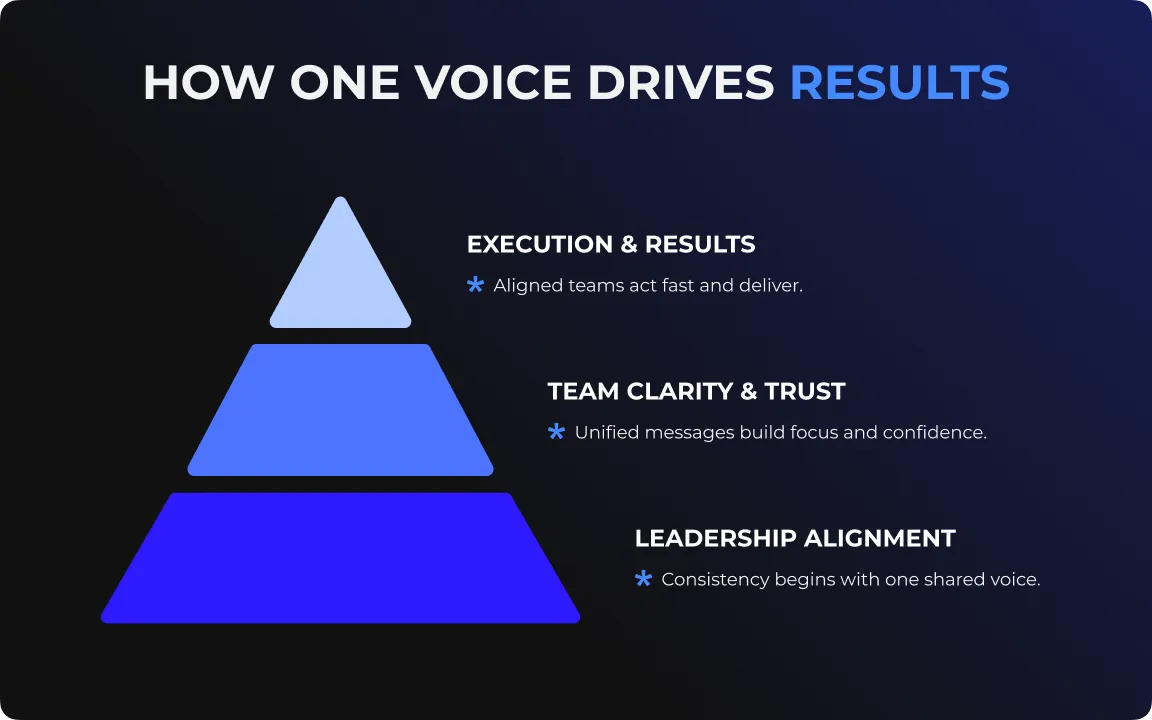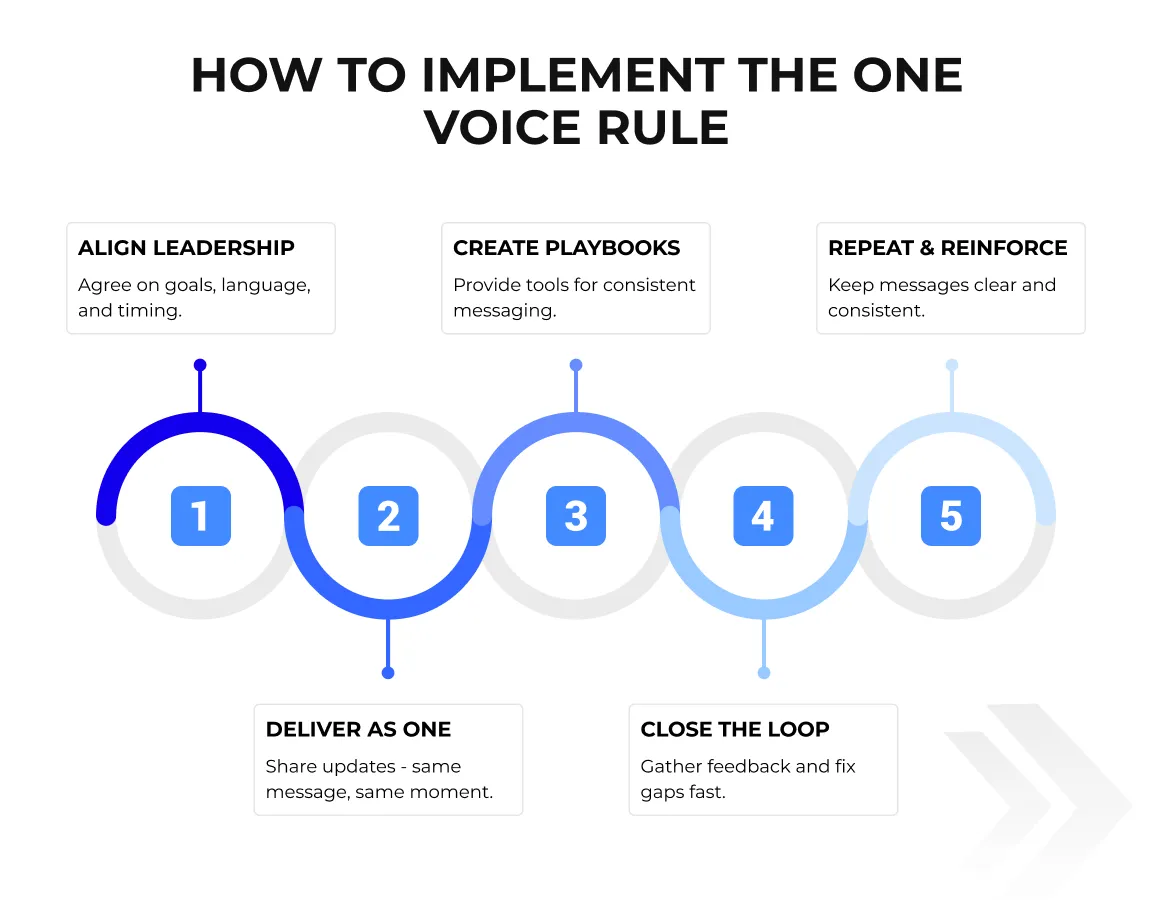Breaking Down Silos: The One Voice Rule for Alignment

Introduction
One of the most common and costly challenges in growing organizations is inconsistent communication from leadership. Different departments hear different versions of the strategy, leaders share conflicting priorities, and teams get frustrated by misalignment and lack of clarity. The result is confusion, wasted effort, and fractured execution. The solution is a simple but powerful principle: the One Voice rule.
What Is the “One Voice” Rule?
The One Voice rule ensures that all teams hear the same strategic message, in the same language, at the same time. It is unified communication from leadership that:
- Eliminates mixed signals
- Reinforces priorities
- Builds trust and transparency
- Aligns the entire organization toward common goals
When executed well, One Voice becomes a strategic lever that strengthens culture and accelerates execution.

Why One Voice Matters for Alignment and Execution
- Eliminates confusion: Teams no longer waste time deciphering conflicting messages.
- Enhances trust: Consistent messaging builds credibility and confidence in leadership.
- Drives focus: Unified communication sharpens focus on what matters most.
- Accelerates action: Clear, aligned messaging speeds up decision making and execution.
Companies that communicate with One Voice foster a stronger, more cohesive culture where everyone moves in the same direction.
Best Practices for Implementing the One Voice Rule
1) Align Leadership Before You Communicate
- Run internal alignment sessions with the leadership team.
- Reach consensus on key messages, priorities, and phrasing before rollout.
2) Deliver Key Messages as a Total Team
- Use all hands meetings, leadership forums, or company wide broadcasts for critical updates.
- Ensure all departments hear the same message simultaneously.
3) Create Messaging Playbooks
- Provide consistent talking points, FAQs, and frameworks.
- Align messaging across email, town halls, chat, and informal conversations.
4) Close the Feedback Loop
- Invite questions and feedback.
- Address inconsistencies quickly and transparently to maintain trust.
5) Repeat and Reinforce Regularly
- Repetition builds retention.
- Reinforce core messages in leader huddles, weekly updates, and internal content.

Real World Example: One Voice in Action
A multi location services company struggled with fragmented communication after an acquisition. By implementing the One Voice rule, aligning executive messaging, and delivering unified updates, they achieved:
- A significant reduction in cross departmental friction
- Increased team confidence in leadership direction
- Faster adoption of strategic initiatives across all locations
One Voice became the catalyst for cultural cohesion and execution excellence.
The Payoff: Clarity, Cohesion, and Speed
When every team hears the same message from every leader, alignment happens. People understand priorities, trust leadership, and execute with confidence. One Voice turns communication into a strategic asset.
Final Thoughts
Leadership communication is not about volume. It is about clarity and consistency. By implementing the One Voice rule, organizations foster alignment, eliminate internal confusion, and accelerate results.
